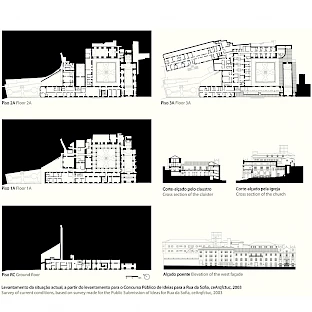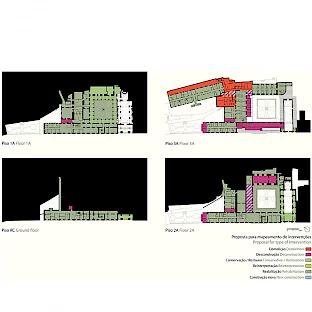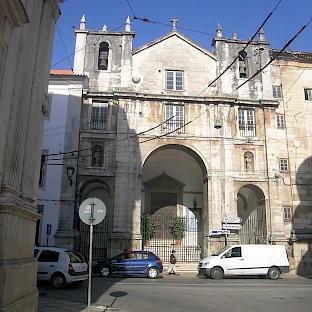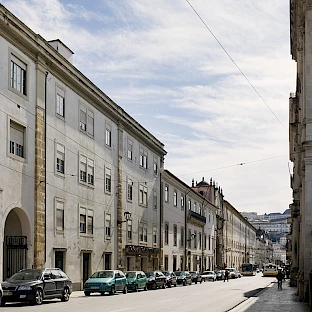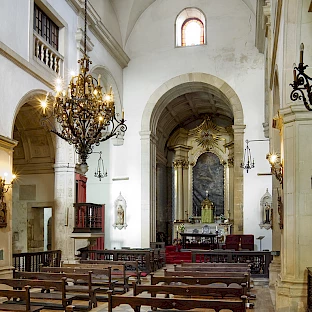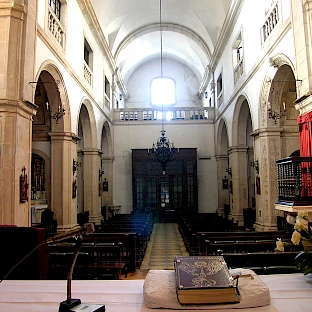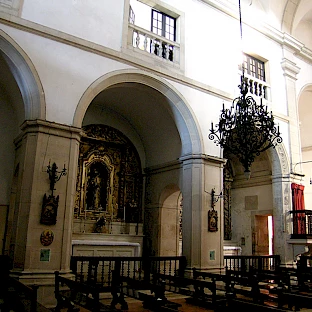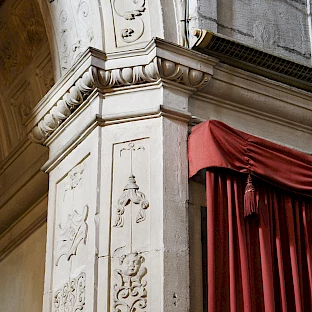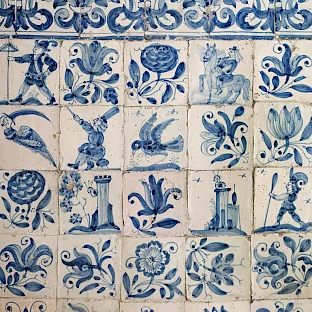Designation
College of Saint Peter of the Thirds
Current occupation
Home for the elderly, commerce
Ownership
Coimbra Health Centre
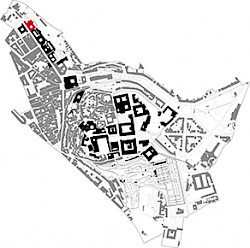
Art-historical characterisation
Founded in 1540, also the year when its construction began, the College was intended to receive poor clerics. The initiative came from Dr. Rui Lopes de Carvalho, who in 1555 was elevated to bishop of Miranda. The church was consecrated in 1548 and the building was only finalised in 1552. In 1572, the collegiate students moved to the Paço das Escolas, and this building in Sofia Street was handed over to the Religious of the Third Order Regular of Saint Francis.
The collegiate church was renovated in the first half of the 17th century, as was the atrium that precedes the entrance, which was decorated in the 18th century with single-figure tiles. The dormitory block and the cloister were also remodelled in the same century.
In 1869, after the extinction of the Religious Orders, the building, including the church and its fence, was bought by private individuals. From 1877 onwards, it housed the Coimbra Mendicity Asylum and, later, the Coimbra Retirement Home.
In 1931, the board of directors of the Asylum decided to use part of the collegiate building to set up a hospital unit, the ‘Coimbra’ Health Centre, which, like a diverse range of social facilities to support the elderly population, still operates there today.
The church, closed since 1834, served for several decades as a commercial establishment, a warehouse, the headquarters of the general workers' union and a popular theatre, only reopening for worship in 1946.
The university colleges
When the University was definitively established in Coimbra in 1537 by order of King João III, the city was endowed with a series of collegiate buildings designed to receive students. Essentially built by different religious orders and bishops, they were a mixture of convent and student residence, with dormitories, refectories, study rooms, cloisters and churches. The first seven buildings in Rua da Sofia were joined by many others in the upper part of the city, totaling 25 in the 18th century.
In 1834, as part of the ‘General Ecclesiastical Reform’, all convents, monasteries, colleges and religious houses of all religious orders were abolished and their assets incorporated into the National Treasury. Many were reused as military barracks, hospitals, railway stations, etc., others were sold at public auction and bought by private individuals. In all cases, the change in functions and uses was radical.



